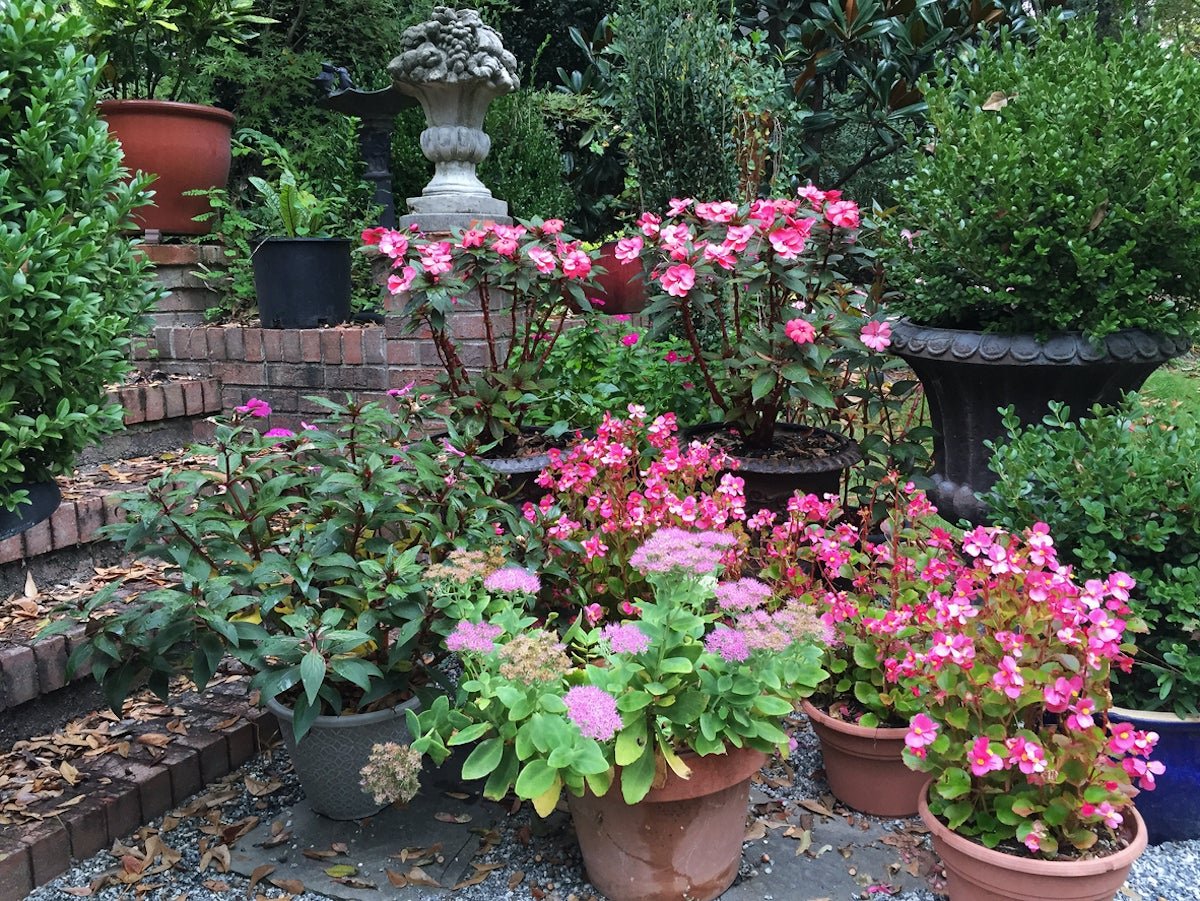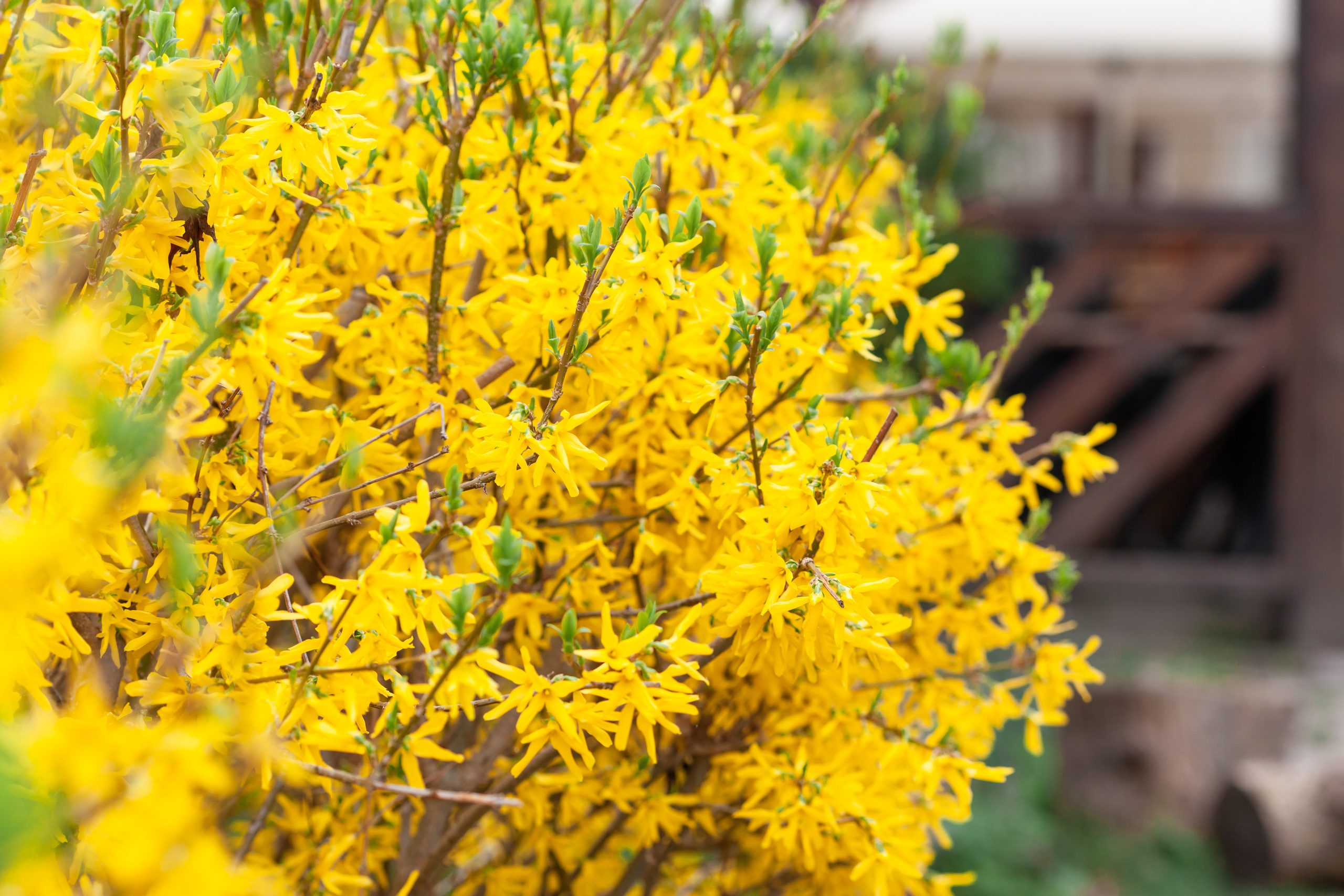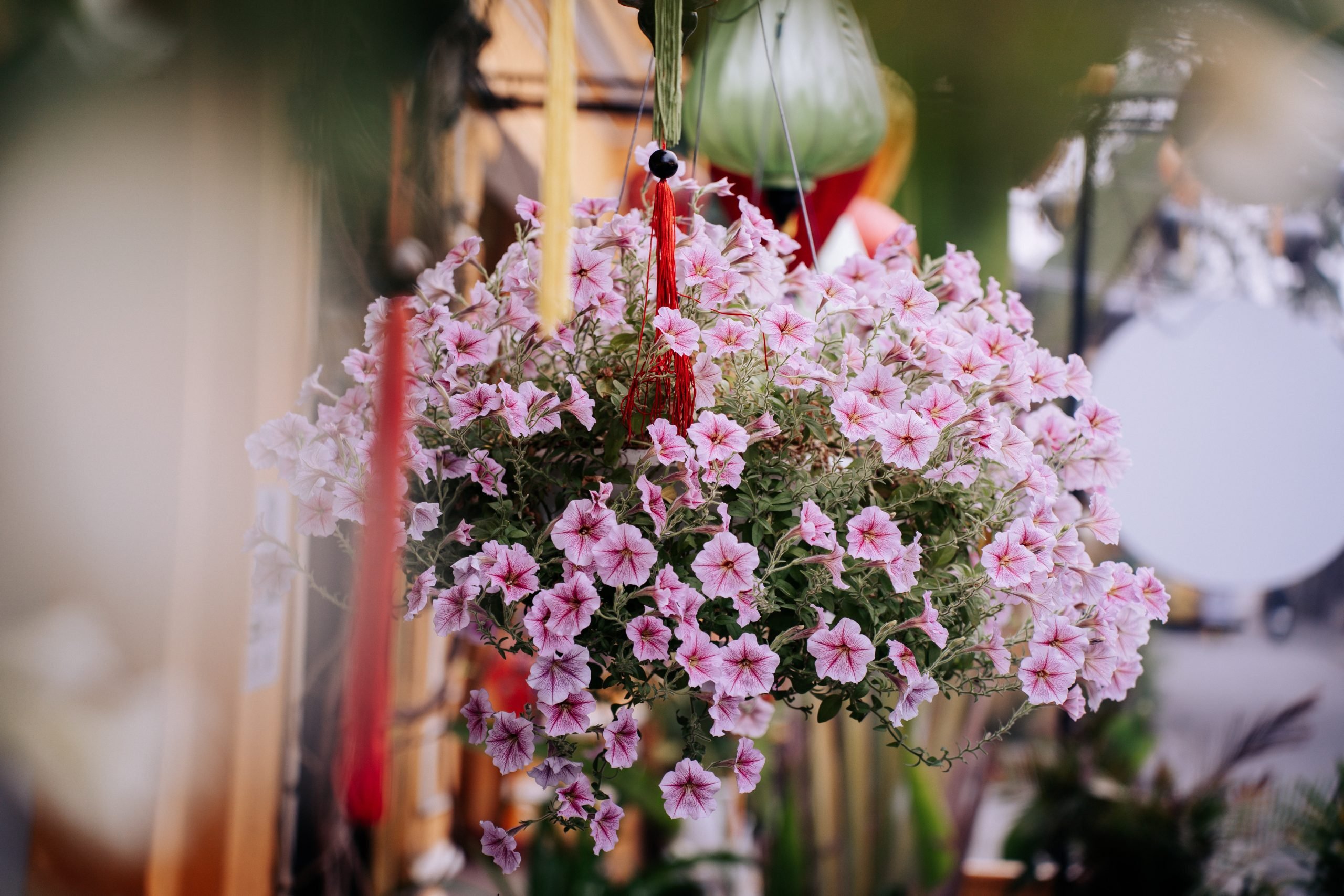When’s the Best Time to Prune Forsythia? Tips You Need to Know
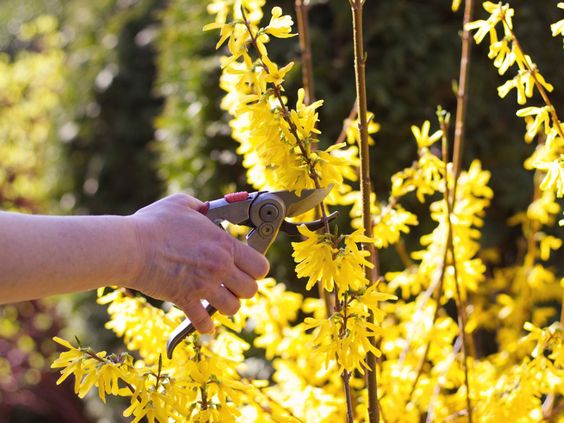
Table of Contents
Do you have a gorgeous Forsythia shrub in your garden, but it’s starting to look unmanageable? Well, it’s time to pick up those pruning shears! Pruning forsythia is a vital task that can help keep it healthy and beautiful year after year. However, when it comes to pruning forsythia, the best time is after the shrub has finished flowering.
This mostly occurs in late spring or early summer. But before you start snipping away, knowing the right techniques and timing is essential. That’s where we come in. This article will cover how and when to prune forsythia, specifically for those in the UK. Pruning can help manage the size and shape of your shrub, encourage new growth, and eliminate any dead or diseased wood.
So let’s get started and make your forsythia the neighbourhood envy!
How to Prune Forsythia?
Forsythia needs to be pruned to remain strong and attractive. Therefore, pruning is a necessary task. Using the right tools, timing, and technique, you can easily prune your forsythia to retain its shape, foster blooming, and eliminate dead or damaged foliage.
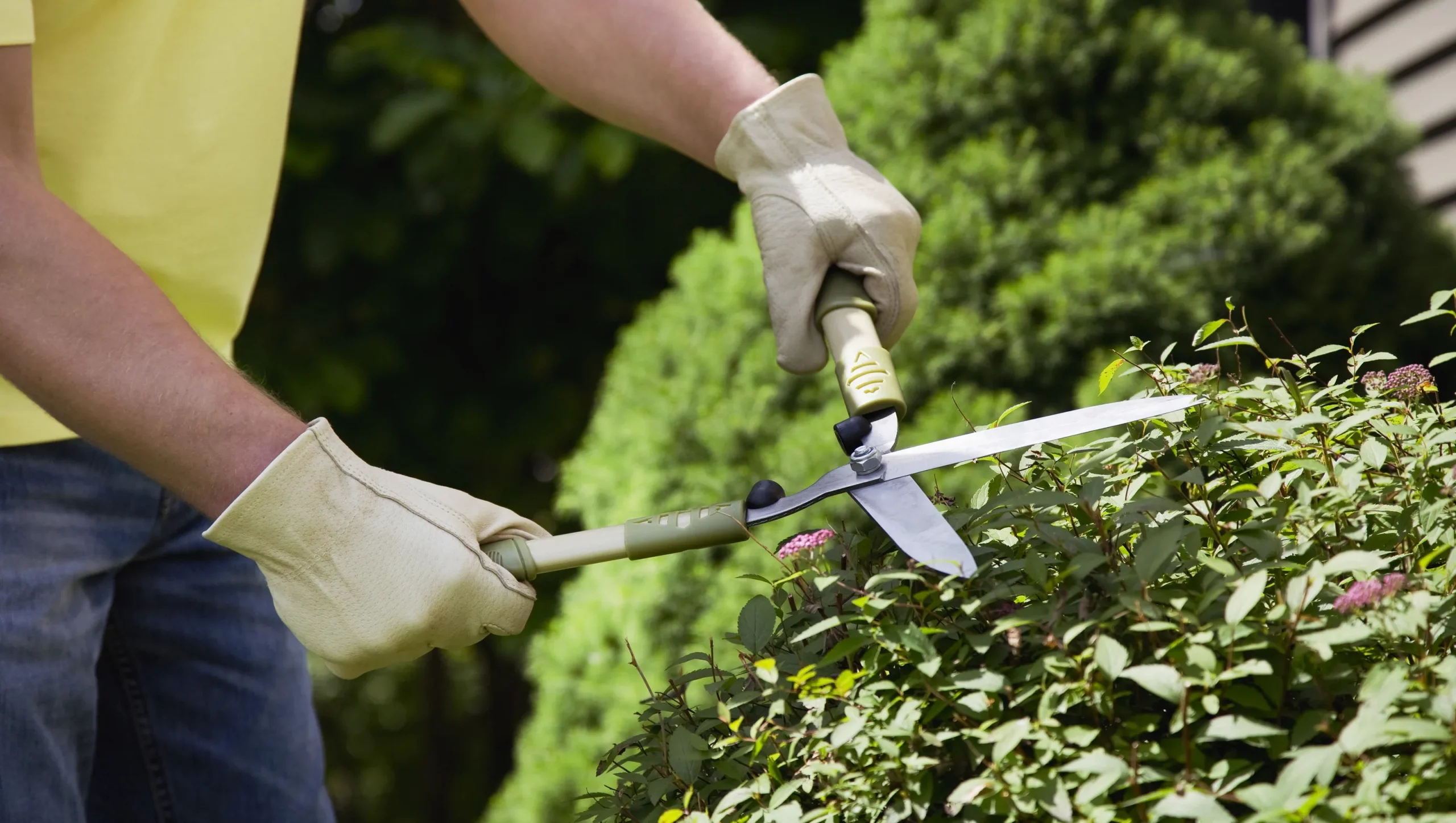
A guide with steps for pruning forsythia UK is provided below:
1. Determine the Right Time to Prune
The first step in pruning forsythia is to pick the right time for the job. These shrubs blossom on old wood, meaning pruning should be carried out just after the flowering season. Which typically falls between late April and early May. Pruning outside this window could negatively impact the blooming of your forsythia. So, make sure to plan your pruning sessions accordingly.
2. Remove Dead or Damaged Branches
To begin the pruning process, identify dead or damaged branches on the forsythia plant. These branches may be brown, brittle, or have no leaves at all. Then, use your pruning shears to cut these branches back to where they meet healthy wood. This will help keep the plant healthy by removing diseased or damaged parts. Plus, it’ll make it easier to focus on shaping and thinning the remaining branches.
3. Thin out Dense Growth
The next step is to thin out areas where the growth is too dense. This is important because it allows more air and sunlight to reach the plant, leading to more blooms and improving overall health. To thin out dense growth, remove a few of the older and thicker branches at the base of the shrub. This will help to create more space and reduce overcrowding. So, if you want your forsythia to be as healthy and vibrant as possible, make sure to take the time to thin it out.
4. Cut Back Older Branches
As forsythias age, they can become woody and less productive. To bring back the vitality of older plants, it’s important to cut back a few of the oldest, thickest branches all the way down to the base of the shrub. This will revive the growth of new branches and give your forsythia a fresher look. It will also help improve the shrub’s overall health and appearance. Doing this will encourage new growth that will produce more blooms, making your forsythia an attractive addition to your garden.
5. Reduce the Size
In case your forsythia has become too big for its location, you can decrease its size by pruning the thickest and oldest branches down to the ground level. This will stimulate new growth from the plant’s base and assist in maintaining a more appropriate size.
6. Shape the Shrub
If you want your forsythia to have a nice shape, start by removing branches growing in the wrong direction or crossing over other branches. Then, grab your hand pruners and trim the tips of the remaining branches to create the desired shape. Just be sure to avoid using hedging shears, which can make your forsythia look flat and unnatural. Instead, take your time and use hand pruners to create a more organic and visually pleasing shape. By shaping your forsythia, you’ll make it look better and improve its health by promoting better air circulation and sunlight penetration.
7. Clean Up
After completing the pruning process, it’s important to clean up any debris lying around the base of the forsythia shrub. This step is important because it helps reduce the risk of diseases and insect infestations. So, please take a few minutes to gather up any fallen leaves, branches, or other debris and dispose of them properly.
Tools for Pruning Forsythia
Before you start pruning the forsythia, ensure you have the necessary tools for the job. Hand pruners, sometimes referred to as pruning shears, are your go-to tool for small branches up to half an inch in diameter. They function similarly to scissors and make it simple to cut thin branches cleanly.
For slightly thicker branches up to an inch in diameter, loppers are handy to have, and a small pruning saw is perfect for even larger branches. However, using hedging shears on forsythia should be avoided at all costs. Although they may be faster, selective hand pruning with the various other tools mentioned is much better for your plant’s health and appearance. So, choose the appropriate tool for the branch size, and your forsythia will flourish and look beautiful for years to come!
Things to Remember Before Pruning Forsythia
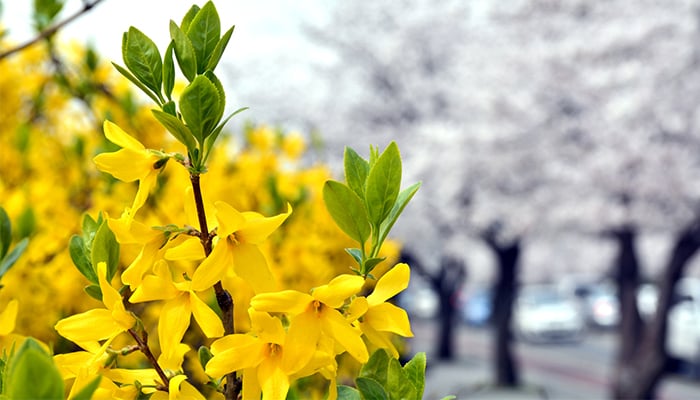
- Using clean and sharp pruning tools when cutting your forsythia is vital to ensure smooth cuts and minimize the risk of personal injury.
- Additionally, using clean tools helps prevent the spread of disease in your garden.
- When it comes to timing, it’s best to prune your shrubs when dry weather is expected for a few days.
- Wet or humid weather can have a negative impact on cut branches because the damp, open cuts create an ideal environment for fungal diseases to develop.
- So, you always need to keep an eye on the weather forecast and try to prune your forsythia when you have a few days of dry weather ahead. It will help keep your shrub healthy and looking its best.
Benefits of Pruning
There are several benefits you may get while pruning your forsythia. Below are the benefits:
- One of the reasons is to create an attractive shape for the plant.
- Trimming can also encourage more blooming.
- Reducing the size of the shrub is another reason for trimming.
- Trimming can help rejuvenate older plants.
- Removing dead or damaged foliage is also a common reason for pruning.
- Finally, thinning out dense, twiggy growth promotes better airflow and the shrub’s overall health.
When to Prune Forsythia?
If you want to prune your forsythia shrub, timing is everything. Pruning too late in the season can accidentally remove next year’s flowers. So, wait until your shrub has bloomed in the spring and the leaves have appeared. This is when you should prune it.
Next year’s flowers grow on this year’s wood, so you don’t want to prune too late after the leaves and flowers are gone. Instead, it’s best to do it early, before July. Pruning early makes it easier to see what you’re cutting, and there won’t be as much foliage to get in the way.
If you have a new forsythia shrub that you just planted, wait until it’s established before pruning. That usually takes about two to three years. If you need to remove a stray branch, that’s okay, but wait to give it heavy pruning until it’s older.
Young vs Mature Forsythia Pruning
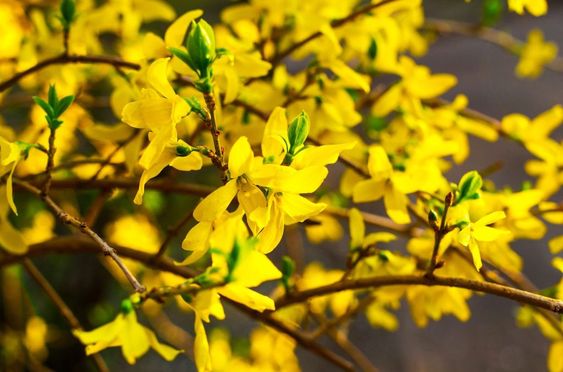
It’s okay to prune your forsythia when it’s 1-3 years old, as young plants don’t require much pruning. Once they mature, you can prune them once a year to keep them in shape. If you desire to keep the plant in shape as it grows, you can prune a few longer stems once a year, but it’s not mandatory.
The best time to prune a mature forsythia is after it has finished blooming in the spring. This will allow you to assess which branches must be removed and which should be kept. If you wait longer to prune, you risk cutting off next year’s flowers, so timing is crucial.
By following these tips for forsythia pruning aftercare, you can help your plant recover from pruning and continue to thrive for years to come.
Tips for Caring Forsythia
After pruning your forsythia, it’s important to give it some care to help it recover and continue to thrive. Here are some tips for forsythia pruning aftercare
1. Water the Plant
Make sure to water the plant thoroughly after pruning. This will help ensure the roots have enough moisture to support new growth.
2. Apply Fertilizer
After pruning, you can apply a balanced fertilizer to your forsythia. This will help to provide the plant with the nutrients it needs to produce new growth and maintain its health.
3. Mulch
Adding a layer of mulch near the plant’s base area can help retain moisture and suppress weed growth. This can be particularly beneficial after pruning, as it can help the plant to recover more quickly.
4. Monitor for Pests and Diseases
Pruning can make the plant more open to pests and diseases, so monitoring it closely afterwards is important. Look for any signs of damage or infestation, such as yellowing leaves, wilting, or insect activity.
5. Prune Regularly
Regular pruning can help to keep your forsythia healthy and looking its best. Aim to prune your forsythia yearly to keep it in good shape.
Conclusion
Pruning forsythia is an essential gardening task in the UK to maintain the plant’s health and appearance. It is very important to prune at the right time to avoid cutting off next year’s flowers. You should wait until the plant blooms in the spring, and once the brilliant display fades and leaves start to appear, it’s time to prune.
Use the proper tools and techniques to avoid damaging the plant. Young forsythias need little to no pruning, while mature ones require yearly pruning. With good care and attention, your forsythia will continue to be a beautiful addition to your garden for years to come.
Comment in the section below if the article was helpful to you or not
Frequently Asked Questions (FAQs)
What Time of Year Do You Prune Forsythia?
To get the best flower display, prune forsythia shortly after it finishes flowering. It’s important to complete all pruning before mid-July to allow enough time for new growth and flower buds to develop as they grow on the current season’s growth.
Can You Trim Forsythia in The Winter?
Forsythia is old and neglected shrubs that can be revitalized through late winter or early spring pruning, cutting back to 4-6 inches above the ground.

